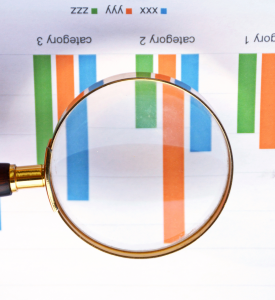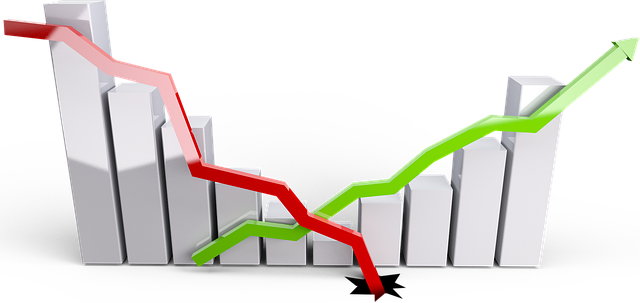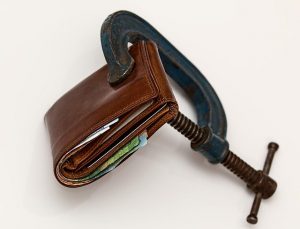
By Richard Morey

First, a quick look at asset sector performance.
Before exploring where we think the economy and markets are likely to go next, let’s first recap how assets performed around the world in the first three quarters of the year:

What do these numbers mean for the economy?
In the last several years, clients have probably tired of me cautioning them that the stock market always goes down before a recession is spotted. Historically, stocks start descending approximately 9 months before the recession is recognized by the National Bureau of Economic Research. If this trend should hold this time around, it would mean the recession began in January.
For the first time in a long time my views have become the mainstream views – at least among business leaders and consumers. Roughly 65% of consumers, and the CEOs of a growing chorus of major corporations, agree the US economy has been in recession this year. Even the prevalent narrative among financial media pundits has shifted toward this perspective.
The Contrarian View
However, there is of course a differing interpretation of economic data. This contrarian view is intelligently described by James Bullard, the President of the powerful St. Louis Federal Reserve Board. (Mr. Bullard’s views are prominently displayed on the Board’s website.) In my estimation he is brilliant, knowledgeable, and he has a mountain of data to prove the US economy is solid as a rock.
 In Mr. Bullard’s recent public discussions and reports, he describes an economic scenario he says will unfold in which the economy continues to expand even when interest rates are much higher. For example, he references the jobs growth we’ve had when rates on the 10-year Treasury were well over 6% instead of under 4% today.
In Mr. Bullard’s recent public discussions and reports, he describes an economic scenario he says will unfold in which the economy continues to expand even when interest rates are much higher. For example, he references the jobs growth we’ve had when rates on the 10-year Treasury were well over 6% instead of under 4% today.
Jobs growth can, he claims, continue with much more substantial interest rate increases. He says the Fed is going to push rates as high as needed, for as long as is needed, until this inflation fully cools. That can be done, according to Mr. Bullard, with little damage to the economy. His basic thesis is the economy is now so strong it can withstand whatever rate hikes are needed.
What is his evidence of this strong economy? Mr. Bullard cites: 1) recent employment growth and 2) consumer balance sheets. He projects the positive assumption that if you put our citizens’ strong financial positions together with a job market where there are plenty of jobs – you can raise rates and gradually slow down the economy without putting it into recession.
These are soothing words for spooked investors. I must respectfully disagree with him for reasons described below. Yet Mr. Bullard is also a realist. In fact, he explicitly states Asia and/or Europe may experience financial crises which could bring our economy down. In my view, the troubled emerging market sector poses a similar threat.
Praising the FED??
Before exploring how much Mr. Bullard’s entire argument rests on classic lagging indicators, versus the much more accurate leading economic indicators (which have been plunging all year), I would like to first applaud his recent work. This isn’t sarcasm. Given the impossible place the Fed is now sitting, I believe Mr. Bullard’s defense of growth even in a sharply rising interest rate environment is exactly what the Fed should be saying and doing day and night to get one reassuring message across to the markets. The message is that we will stop inflation no matter what.
sarcasm. Given the impossible place the Fed is now sitting, I believe Mr. Bullard’s defense of growth even in a sharply rising interest rate environment is exactly what the Fed should be saying and doing day and night to get one reassuring message across to the markets. The message is that we will stop inflation no matter what.
Commodity prices have plunged in the last several months. Supply chain issues are still a problem, but they are diminishing. Then we have the US dollar roaring – due to the whole world scared to death we’re going to have a worldwide recession. A strong dollar means everything we import goes down in price. These are just three of the large, disinflationary forces which may come into play within 6 months.
I could go on and on with signs inflation will soon be cooling. Not just signs but provable facts – a whole page of such data. If I was a Fed Governor, I would ignore all of it. This is exactly what the top Fed officials are doing.
 Why? Because it’s far better to err on the side of caution, considering what is at stake. If the Fed even thinks of taking their foot off the gas until it’s clear inflation has fallen sharply and sustainably, if all the indicators showing inflation getting ready to cool off turn out to be wrong, the result is a disaster. Inflation around 8% starts to hurt – beginning at the bottom of the economic ladder. If it goes to 10-12%, the average consumer starts to struggle, and by around 15% inflation starts to wreak havoc on the entire economy. I have maintained all year that the 8% inflation range we’ve had this year is creating serious damage already. At 15% the damage is so great even Fed officials who have spent decades following wildly imprudent practices know this cannot be allowed on their watch.
Why? Because it’s far better to err on the side of caution, considering what is at stake. If the Fed even thinks of taking their foot off the gas until it’s clear inflation has fallen sharply and sustainably, if all the indicators showing inflation getting ready to cool off turn out to be wrong, the result is a disaster. Inflation around 8% starts to hurt – beginning at the bottom of the economic ladder. If it goes to 10-12%, the average consumer starts to struggle, and by around 15% inflation starts to wreak havoc on the entire economy. I have maintained all year that the 8% inflation range we’ve had this year is creating serious damage already. At 15% the damage is so great even Fed officials who have spent decades following wildly imprudent practices know this cannot be allowed on their watch.
On the other side of the Fed’s decision coin, if they raise rates too high too fast, asset prices will continue to fall, and the economy will go through a recession of unintended severity, or perhaps even worse. People should read former Fed Chair Paul Volcker’s blow-by-blow account of the recession that accompanied his interest rate increases which eventually stopped inflation by 1982. It was severe, but we recovered.
Yet the bottom line is that for the Fed, even a deep recession isn’t nearly as bad an outcome as runaway inflation – not even close. To the contrary, even an ugly recession right now has three large upsides for the long-term health of the US economy:
1. It will be accompanied by a “clearing the deck” of bad business debt. Yes, this will be a brutal debt liquidation event, but a close reading of Jerome Powell’s speeches a decade ago indicates he knows this is both inevitable and necessary for long-term economic growth.
Jerome Powell knows the losses involved are much higher than they were when he spoke in 2010 on the topic, and he has to know removing non-productive debt from your economy is a requirement for economic growth when that debt exceeds a certain level. He also must know we passed that threshold a long time ago.
2. A severe recession will end both our corporate debt bubble and our other asset bubbles including stocks and parts of real estate – including once again single family homes. In 2010 Jerome Powell cautioned against the Fed letting bubbles reform by keeping interest rates too low for too long. This is, of course, exactly what the Fed proceeded to do.
The point is that Chairman Powell obviously wants the bubble regime to end.
3. Higher interest rates will greatly help savers, and especially older retired citizens. Low rates do not spur long-term economic growth but the opposite – as seen by historically low economic growth in this country over the last 14 years. Higher rates give prudent savers a return on their money, and it makes your entire banking system – both the institutions and the borrowers – value money. This leads to prudent decisions, fewer bubbles, and much higher long-term economic growth.
I’ve known Chairman Powell understands each of these points in great detail, but until recently I assumed he would continue the path the Fed has followed since 1987, which you could call “protect asset prices at all cost.” Now it looks as if he – and at least two of the other top Fed officials – are serious about doing the right thing for the health of the economy. The two are Bullard and Lael Brainard, the Fed’s relatively new Vice-Chair.
Lagging Versus Leading Indicators, and the Consensus View
I believe the reason the Fed’s views tend to differ from most economists and consumers has to do with the Fed’s reliance on lagging indicators.
Simply put, lagging indicators are the big economic numbers which go down last. Even after the economy as a whole is definitely contracting, they continue to rise for some time.
The largest lagging indicator is employment gains, using the payroll survey method (in which they look at the number of new people added to the payroll tax system each month). The problem is that the payroll survey almost always shows some of its strongest jobs growth in the first months of a recession.
The other thing I question about Mr. Bullard’s sweeping statements is his notion consumers have rock solid “balance sheets.” That’s just plain wrong. Sixty percent of our consumers don’t have one penny on their balance sheet – not one penny. Yes, the upper part of the middle class and above still have solid income and assets relative to their debts (i.e. balance sheets). But their retirement money just took a 25% hit in the last nine months, while the value of their home may have peaked or started down. How long will they maintain spending in a rising interest rate/falling 401k environment?
sheet – not one penny. Yes, the upper part of the middle class and above still have solid income and assets relative to their debts (i.e. balance sheets). But their retirement money just took a 25% hit in the last nine months, while the value of their home may have peaked or started down. How long will they maintain spending in a rising interest rate/falling 401k environment?
The standard way to try to figure out where we’re headed is to ignore lagging indicators – particularly the error-ridden payroll survey – and focus on what are called the leading indicators. Indexes of leading economic indicators focus upon data like orders for new goods and housing starts– in other words data indicating the initial steps leading to economic growth, or contraction.
The most commonly used leading indicators are kept by the Conference Board. From their website: “The Conference Board is the global, nonprofit think tank and business membership organization that delivers Trusted Insights for What’s Ahead™. For over 100 years, our cutting-edge research, data, events and executive networks have helped the world’s leading companies understand the present and shape the future.”
The Conference Board’s forward-looking data paints the following picture as of August 22/2022. It reveals a drop historically only seen as we enter recessions. In fact, it says we were in a recession before August 22.
"The ten components of The Conference Board Leading Economic Index® for the U.S. include: Average weekly hours in manufacturing; Average weekly initial claims for unemployment insurance; Manufacturers’ new orders for consumer goods and materials; ISM® Index of New Orders; Manufacturers’ new orders for nondefense capital goods excluding aircraft orders; Building permits for new private housing units; S&P 500® Index of Stock Prices; Leading Credit Index™; Interest rate spread (10-year Treasury bonds less federal funds rate); Average consumer expectations for business conditions."
From: https://www.conference-board.org/topics/us-leading-indicators##
 In my view, one of the most helpful leading indicators involves semiconductor stocks. These stocks are down 40% so far this year. Semiconductors go into almost everything that is sold, so the fact their orders have dried up tells us where we’re going when it comes to sales and corporate earnings.
In my view, one of the most helpful leading indicators involves semiconductor stocks. These stocks are down 40% so far this year. Semiconductors go into almost everything that is sold, so the fact their orders have dried up tells us where we’re going when it comes to sales and corporate earnings.
Listening to the CEOs of the largest semiconductor companies during last quarter’s earnings calls was sobering. This included the CEOs of Intel, Micron, Nvidia, and AMD – the “who’s who” of the semiconductor industry. They all say business is drying up all over the world.
A recent statement by the CEO of Micron was almost identical to the CEO of another company with broad exposure to both consumes and businesses. I’m referring to the CEO of FedEx, who recently said the economy is in a full-blown recession right now.
Before ending our look at the consensus view as to our possible recessionary status today, I should mention it doesn’t matter to me as an investor whether we entered a recession last year, last quarter, or will next year. Stated simply, in the event of recession, our investment path remains the same until we hit bottom.
Summary
Jerome Powell and the Fed now seem to be fully on board with Paul Volcker’s approach to inflation. This means they will continue to raise rates until inflation rolls over and the economy falls to wherever it falls. They need to do this. However, tightening financial conditions in a recession means the cost of money keeps rising as companies and people keep losing more of it.
With dramatically higher interest rates, bad loans are going to be exposed. How big the ensuing wave of bankruptcies turns out to be is always unknown until it happens. This is what Warren Buffett was referring to when he said, “When the tide goes out you get to see who was swimming naked.”
SMILE ZONE
1. A guy spots a sign outside a house that reads “Talking Dog for Sale.” Intrigued, he walks in.
“So what have you done with your life?” he asks the dog.
“I’ve led a very full life,” says the dog. “I lived in the Alps rescuing avalanche victims. Then I served my country in Iraq. And now I spend my days reading to the residents of a retirement home.”
The guy is flabbergasted. He asks the dog’s owner, “Why on earth would you want to get rid of an incredible dog like that?”
The owner says, “Because he’s a liar! He never did any of that!”2. Two men are playing golf. One of them is about to take a swing when a funeral procession appears on the road next to the course. He stops mid-swing, takes off his cap, closes his eyes, and bows his head in respect.
His golfing buddy says “That must be the most touching thing I’ve ever seen. You are a very compassionate and kind man.”
The man, recovering himself, replies, “Yeah, well we were married 25 years.”3. Every ten years, the monks in the monastery are allowed to break their vow of silence to speak two words. Ten years go by and it’s one monk’s first chance. He thinks for a second before saying, “Food bad.”
Ten years later, he says, “Bed hard.”
It’s the big day, a decade later. He gives the head monk a long stare and says, “I quit.”
“I’m not surprised,” the head monk says. “You’ve been complaining ever since you got here.”

